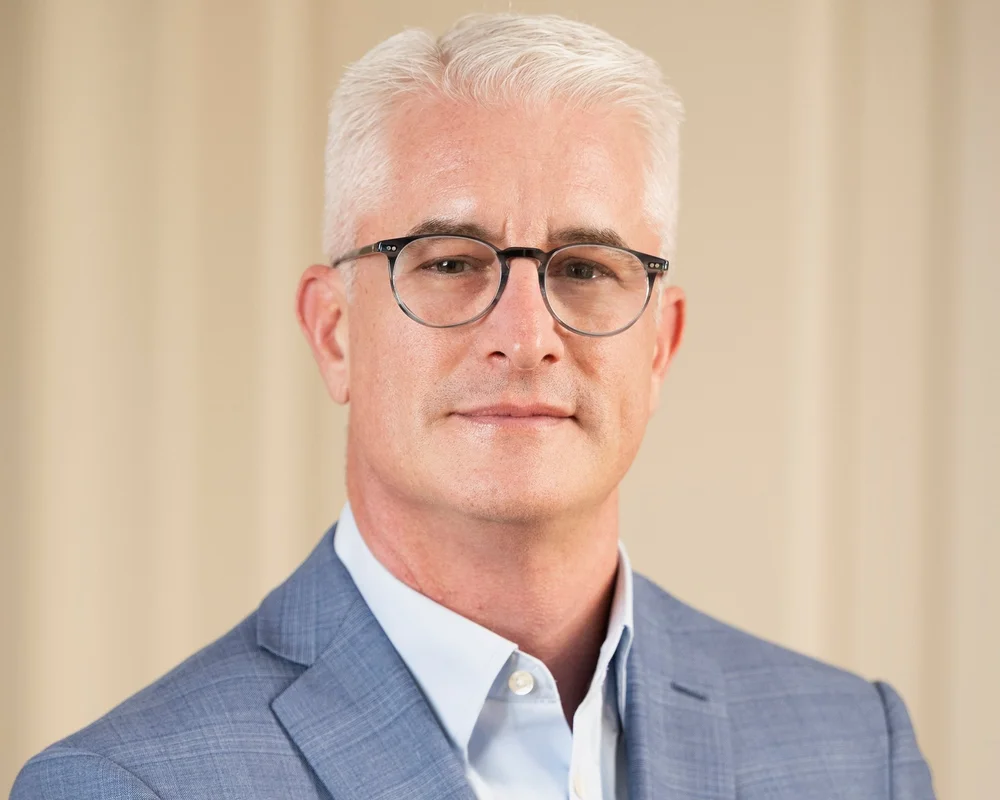 As carriers move their infrastructure to the cloud, the way in which they interact with the data that powers their systems is also evolving rapidly. That is starting to bring the companies that ingest, manage, and distribute that data out of the shadows. One such company is netnumber Global Data Services, which was acquired by Abry Partners over the summer. With us today to talk about the phone number data intelligence marketplace in an increasingly decentralized marketplace is the company’s CEO Steve Legge.
As carriers move their infrastructure to the cloud, the way in which they interact with the data that powers their systems is also evolving rapidly. That is starting to bring the companies that ingest, manage, and distribute that data out of the shadows. One such company is netnumber Global Data Services, which was acquired by Abry Partners over the summer. With us today to talk about the phone number data intelligence marketplace in an increasingly decentralized marketplace is the company’s CEO Steve Legge.
TR: How did you get involved in telecommunications?
SL: Prior to telecom, I was the CTO for a TV network in Australia. We were planning our move into digital television and identified an opportunity to start a wholesale telecoms business off the back of building a new digital television distribution network to replace our analogue network. That business grew quickly and actually overtook the TV business to become the national network in Australia that is now TPG telecom. Many of the original team that I had there are still involved with TPG, which is terrific, but I relocated to the U.S. around 14 years ago. I crossed to the vendor side to work for Cisco for a little while before joining NetNumber in 2013.
TR: NetNumber was recently purchased by Abry Partners. What led to that deal and how has the new ownership changed things?
SL: While the company was founded in 1999, when I joined it was still relatively small. It consisted of two separate lines of business: a software business focused on providing core network components for carriers and a telecom data services business. Over the last five years both businesses grew quite quickly, independently. And it became increasingly obvious that it was strategically important to separate the businesses to enable each to realize its full potential. So in June we spun off the software business, which is now Titan.ium Platform. And then Abry Partners acquired NetNumber in July. It has been a great transition for us that has been validated by both the market and our results. Abry has very experienced investors who really understand the nuances of the telecommunications business. Together, we have been able to move the business forward quickly, focusing on both internal operations and strategic growth. We are now poised to continue to invest organically in the business and the marketplace.
TR: What does the modern phone number data intelligence business look like today, and how does netnumber Global Data Services approach it?
SL: The data that we have is essential to sending text messages and making telephone calls. You can think about it as the lifeblood of the day-to-day operations of telecommunications networks. It’s all industry data that everyone has to share, but there are only a small number of providers that have this data globally. We have been doing this for well over 15 years, and we have a suite of data solutions that power messaging and voice networks globally, and more recently an increasing number of networks of Fintech and other CPaaS providers and messaging companies. The data really solves increasingly complex ecosystem challenges when it comes to routing a text message or a voice call, authentication, accurate billing, and fraud prevention.
We take data from over 100 different sources. We have over 2.4 billion telephone numbers in our inventory, for which we have a whole range of very detailed network and service attributes. They are not subscriber details; they are the network and services attributes attached to those phone numbers. We also include some special sauce in the form of a very high resolution or precision identification capability describing which network in which country is the owner of that number. In the days before mobile networks, international standards specified a four-digit code to identify all of the networks globally. At the time that was conceived, there was probably no thought of mobile networks, let alone all of the changes that derived from their creation, and so the four-digit code quickly became a challenge for the industry. We realized this was a problem long ago, and so we brought a six-digit ID into the market as part of our data capabilities, and that is now used as a de facto standard. The network and service attributes we distribute include number portability data, MVNO data, A2P messaging and things like RCS capability discovery. We have more than 100 such data sets.
TR: So if someone initiates an action on my voice or messaging network that needs to terminate on another network, my network can access your data to most efficiently accomplish that task?
SL: Yes. For example, consider when a subscriber moves his mobile phone from AT&T to Verizon. Today that number port happens within seconds. When that number is ported, if someone is sending a text or making a phone call to the number that’s moved, the carriers all need to know where to send that call. The information must be updated constantly in real time. We distribute this data into the middle of the carrier networks, who are our customers, such that it can be looked at dynamically. And it is not just U.S. data that’s important, the same thing is happening in the 96 or so countries that support number portability. We take that data from wherever the source is and aggregate that data together. It’s all in different formats and it’s constantly changing. But when our customer buys the data from us, we can answer the question of where to send that text message.
TR: That sounds like a data ingestion problem on a moving target. How quickly is it moving?
SL: Some are more advanced than others in how they do this. Some countries are like the U.S., but there are some other countries that update their data once a day, and there are others in between. We take the challenge of taking that complexity away for our customers by constantly sourcing and adapting the data. There are also increasingly more attributes that go along with this data, such as A2P messaging where you have telephone numbers that are a part of enterprise messaging campaigns. Being able to attach those attributes and provide a normalized data set is of great value to our customers.
TR: What trends are you seeing in the types of data your customers need?
SL: One of the biggest trends revolves around mobility and all of the different communication channels that exist now. You have one mobile phone with one phone number, yet you have a lot of other channels there like WhatsApp etc. The phone and the number are increasingly a key component of security when it comes to fraud and authentication. Years ago, there was talk about phone numbers being replaced by other forms, but it is the telephone number that is ubiquitous in all of this. Your handset is being used for all different types of things, so being able to provide all of these different attributes and capabilities and to meet the requirements around new use cases is really very important. RCS is a new one. RCS has been talked about for a long time, and some significant investments are being made. Our customers may now need to know whether there’s an RCS-capable device involved, so we are collecting and offering that data as well.
TR: What role do you play in security and authentication?
SL: The data that we have is taken from trusted sources, and in some cases, we are the trusted source. This data is used in concert with other vectors that the customer may have, which will be different for a carrier than, for example, a bank. For example, number portability data, not only gives you the current routing, it gives you the information about when the number ported. If you see a number porting and then porting back within a short period of time, that is a red flag that the customer can use to detect fraud. The other data that we have can similarly be ingredients into various verification, authentication, and fraud prevention use cases. The details depend on the customer.
TR: How do you deliver this data to the customer, and how is that changing?
SL: It depends on the customer, the market, and the type of data. Some of this data we can deliver on site with the customer directly into their network. But increasingly we see customers moving to the cloud. We started moving to cloud infrastructure back in 2018. It was a very conscious decision back then to start leveraging large-scale, global cloud infrastructure because it was very appealing to us and well-suited to the type of things that we were looking to do. We are now seeing our carrier customers starting to move infrastructure into partner clouds, and as they decentralize their infrastructure, we are meeting them in the cloud rather than on site. This reduces latency, reduces the burden on their infrastructure and really helps them in terms of their architecture. We have a residual amount of colo space in a couple of third-party data centers, but soon, we will be pure cloud.
Even pre-pandemic we were largely a remote workforce. Post the Abry transaction, we have elected to go forward with no corporate offices. So now we’re all remote workers, spread across the U.S. and with some employees in Europe as well. It was a very easy choice for us. It is family friendly, requires less travel, and our employees are more productive.
TR: How do you view the next generation of technologies like 5G, AI, and such changing things?
SL: From a 5G standpoint, probably the biggest change is the decentralization and edge compute model that the carriers are moving toward. Our investment in the cloud is fortuitous in that we’re able to meet that architecture for some customers. I think that telecom architectures, over time, will be increasingly decentralized. They won’t operate on a hub and spoke model anymore. From the standpoint of our own evolution, the tool sets in the cloud are important to us, so we’re continually learning. For AI, that is something I think we will leverage internally for planning and reporting purposes. We’re already doing some of that on a small scale, but we see the window to the future of how we can leverage those tools becoming clearer every day.
TR: Thank you for talking with Telecom Ramblings!
If you haven't already, please take our Reader Survey! Just 3 questions to help us better understand who is reading Telecom Ramblings so we can serve you better!
Categories: Big Data · Industry Spotlight · VoIP · Wireless






what is the reason NetNumber was sold to Abry Partners?